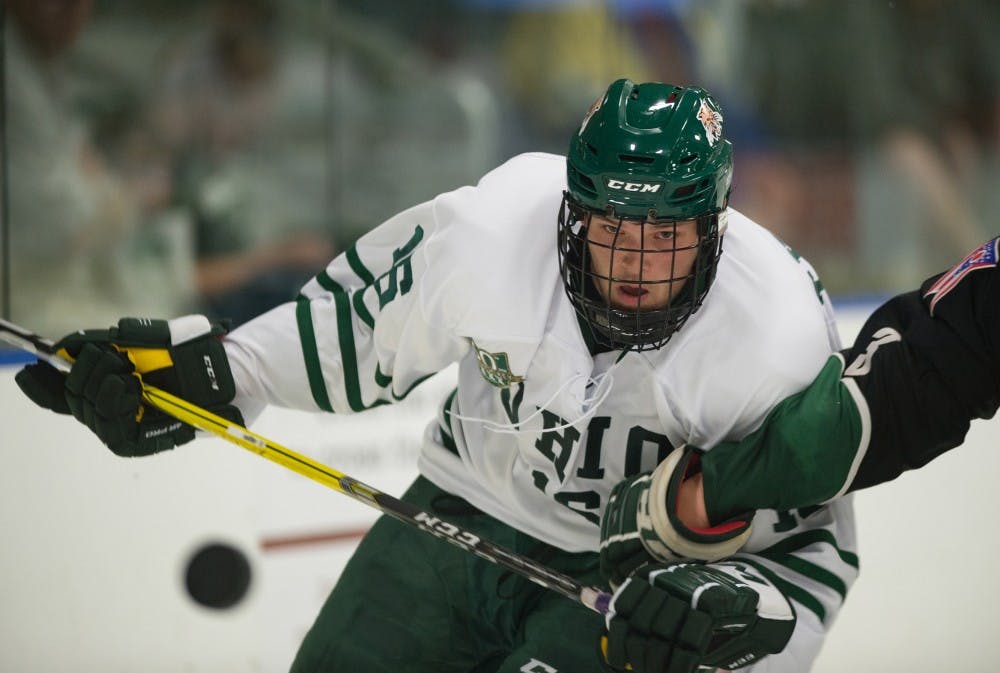Bird Arena often carries numerous advantages for Ohio — its raucous crowds and smaller ice give the Bobcats an edge when they’re at home.
But the 60-year-old building’s ice surface isn’t always as friendly to Ohio, which was especially apparent this weekend for the Bobcats, who still managed to sweep UNLV.
“It slows us down because we can't make the play we want to make,” coach Sean Hogan said after Friday’s narrow 3-1 victory. “We couldn't make a pass like we wanted to make or passes that we usually can make."
When the temperature outside goes up, so does the temperature in Bird Arena. This weekend’s game time temperatures outside were near 70 degrees, and the conditions earlier in the day and throughout the week climbed into the upper 70s.
The warm temperatures led to some harsh ice conditions at Bird Arena. When the ice is replenished via Zamboni, a coating of both cold and hot water is used to smooth the surface and remove ice shavings from players’ skates, according to Brendan Seeburger, an ice-maintenance employee at the rink.
But the process obviously works best when the ice is, well, ice. Otherwise, the water tends to linger on the surface, and the puck can make some unexpected and unfriendly movements — a disadvantage for both teams.
A slushy ice worked especially against one of Ohio’s main assets this weekend: speed.
"Our speed is such an advantage right now,” assistant coach Dan Bremner said after the Bobcats’ narrow 3-1 win Friday. “We're wearing teams down, but on this ice, it kind of evens it out for them."
The wet ice also led to some passing troubles for Ohio. In the second period of Saturday’s eventual 7-1 win, forward Gianni Evangelisti looked poised to find a scoring opportunity on a two-on-one rush with forward Timmy Thurnau on his left side. When Thurnau made the pass over to Evangelisti, the puck slid through a wet portion of the ice and rolled over Evangelisti’s stick.
Some players don’t like using the ice as an excuse for such misplays, but Evangelisti didn’t hesitate to throw the label on the missed opportunity.
“100 percent, it was the ice,” Evangelisti said. “When I got (the puck), it was wobbly so I couldn’t put anything on it.”
There really isn’t much of a solution to getting around the ice issue, said forward Bryan Lubin, who failed to convert on five breakaway opportunities in Friday’s game.
It should be easy for Lubin to use the ice as the reason for his struggles, but the junior put it on himself to make the play in the future.
“I should’ve bared down on a couple of them,” Lubin said. “It’s tough, but we practice with this all week. We’re used to it. (We've) got to make hard passes. Everything’s got to be hard.”
The soggy ice is a problem Ohio frequently has in the first part of its home schedule, although it’s one the Bobcats have been able to overcome in recent years — Ohio is 16-4-1 in home games during the first two months of the season since the 2015-16 season.
Hogan doesn’t see an end to the early-season issue any time in the future, but, perhaps because of Ohio’s home success, he laughed it off.
"Not to get political, but it's getting warmer every year, so it isn't going to get any better in the years to come," he said.






